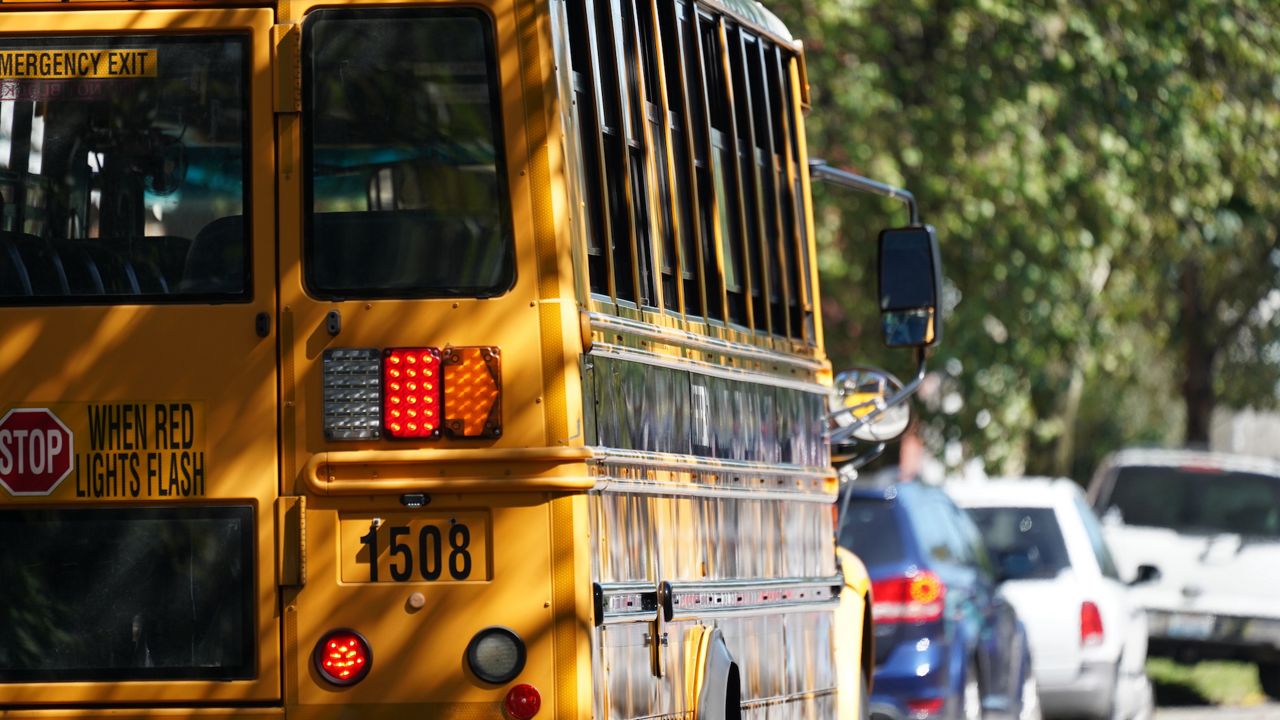LOUISVILLE, Ky. — Kentucky school districts have largely returned to in-person classes this week, despite heightened concern over rising COVID-19 cases due to the omicron variant.
The decision to prioritize in-school instruction in the commonwealth comes as some districts around the nation have gone virtual in an attempt to slow the spread of the virus or to manage staffing shortages due to sick teachers.
Gov. Andy Beshear said Monday that he wants to make sure all students in Kentucky remain in the classroom. The keys to that, he said, are ensuring that students wear face coverings and an increase in the vaccination rate among 5- to 11-year-olds, which is currently 17%.
“If we want to keep our kids in school, it’s universal masking and increasing that number, specifically,” he said.
Kentucky is currently seeing one of its worst COVID surges, with the new variant accounting for nearly all of the cases. Last week, the state had 29,955 new COVID-19 cases, the second-highest weekly number ever. According to the state’s incidence rate map, all but five of its 120 counties are in the red zone, meaning more than 25 people per 100,000 are testing positive each day.
Even with that level of spread, Public Health Commissioner Dr. Steven Stack said Monday that he’s committed to children attending school.
“We’ve got to have our kids in school,” he said. “We all know it. It’s a priority we all share. This is not rural or urban or Democratic or Republican. We all know we’ve got to have our kids in school and we’re all committed to that.”
On Tuesday, students returned to classrooms in the state’s largest school district, Jefferson County Public Schools. In a letter sent to families Sunday, JCPS said it’s “continually reviewing data to understand COVID’s impact on our school community.” The district continues to require masks and has made testing available at more than 50 district locations around the city.
Fayette County Public Schools Superintendent Demetrus Liggins shared a similar message with families last week. “We will continue with the health and safety practices we have had in place throughout the school year to better help mitigate the spread of COVID-19 so that our schools can continue to be open for in-person learning,” he wrote.
Both counties are currently seeing COVID cases surge. In the week ending Sunday, Jan. 2, Jefferson County saw more than 10,000 people test positive for the virus. Fayette County is currently averaging 395 new cases a day, with the local health department saying the area is encountering an “overwhelming surge of new cases.”
Some areas haven’t begun to see a similar surge, though, and the mitigation efforts at their schools reflect it. In Pulaski County, one of the five in the state not in the red on the incidence rate map, masks are optional for the first week of school. They’re also optional at Oldham County schools, which has one of the state’s highest incidence rates at 119.8 cases per 100,000 people.
Beshear said Monday he would reinstitute a statewide mask mandate in schools if he still had the authority. He said he asked the General Assembly, which stripped him of some emergency powers last year, to return that ability to him but is not confident they will. “I don’t expect them to do it, but I think it’s necessary,” he said.
Some districts have begun getting creative in their attempts to stave of COVID. In Knox County, Barbourville Independent Schools went virtual in the last week before winter break. In a letter to parents, Superintendent Dennis Messer wrote that the decision was made “due to the rise of COVID-19 cases in the school and community.” Just three weeks before that decision was made, the district's school board removed its mask mandate. Students returned to Barbourville schools on Monday, Jan. 3.
Harlan County Public Schools, meanwhile, are encouraging those “who have medical concerns or those with primary caregivers who have medical concerns” to forgo in-person classes in favor of its virtual academy.
Many school districts are also relying on the state’s test to stay program to keep students in the classroom. The program allows students who have been in close contact with a positive COVID-19 case to remain in school, provided they test negative for COVID. A new test must be taken each day for seven consecutive days and as long as they’re negative, students can attend school the next day.
If schools transition away from in-person classes to nontraditional instruction, or NTI, they won’t be able to do so for long. Last year, the General Assembly limited schools to 10 NTI days.
JCPS school board member Chris Kolb said in a tweet that the limitation on NTI days made it difficult for the district to delay a return to the classroom. “Personally, I'd prefer we wait a few days to allow everyone to get tested before returning,” he wrote.
In the fall, the limited number of NTI days led some school districts to close entirely, rather than use NTI days, to deal with rising COVID cases or staffing shortages. At the time, the Kentucky Department of Education said it was hoping lawmakers would provide districts with more flexibility during the legislative session, which began in Frankfort Tuesday.



